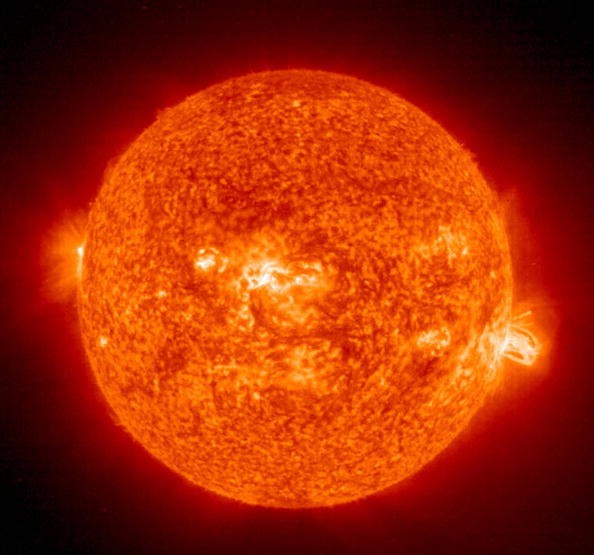The Sun recently ejected a large X-class solar flare, and it looks that an accompanying coronal mass ejection from the Sun might reach Earth on October 30 or 31, causing a geomagnetic storm around Halloween. A Radiation Storm caused by the explosion is currently affecting Earth.

X-Class Flares

The largest solar flares are known as "X-class flares." A-class is the smallest, followed by B, C, M, and X. Each letter symbolizes a 10-fold increase in energy production, similar to the Richter scale for earthquakes. As a result, today's X-class flare is ten times the size of an M and one hundred times the size of a C-class flare. There is a finer scale from 1 to 9 inside each letter class. Today's solar flare has an X1 rating. The Sun's active zone #2887, a developing sunspot area initially spotted days ago, produced today's X-Class outburst.
An S1 Radiation Storm began at 1:40 p.m. ET today, according to NOAA's Space Weather Prediction Center (SWPC), and a Radiation Storm Warning has been issued until 8:40 a.m. ET tomorrow.
Solar Radiation Storm
Solar Radiation Storms occur when a large-scale magnetic eruption accelerates charged particles in the solar atmosphere to extremely high velocities, according to the SWPC. Protons, which can be accelerated to significant fractions of the speed of light, are fundamental particles. The protons can reach Earth in less than an hour after the explosion if they travel at these speeds. When these particles reach Earth, they pierce the magnetosphere, protecting the planet from lower-energy charged particles. The particles are steered along magnetic field lines and enter the atmosphere around the north and south poles once within the magnetosphere.
Solar Radiation Storms can have a variety of effects on Earth. For example, when intense protons hit satellites or people in orbit, they can penetrate the item and destroy electronic circuitry or biological DNA.
High-Flying Aircrafts and Personnel
Passengers and crew on high-flying aircraft at high latitudes may be exposed to radiation during more intense Solar Radiation Storms. However, commercial airplanes can be diverted away from locations with the highest radiation hazards during such storms. When intense protons clash with the atmosphere, they ionize the atoms and molecules, releasing free electrons, according to the SWPC. These electrons form a layer at the ionosphere's bottom that can absorb HF radio waves, making radio communication difficult or impossible.
Solar Weather Prediction

Solar Radiation Storms are classified by NOAA's SWPC using their Space Weather Scale, ranging from S1 to S5. A Solar Radiation Storm can last anywhere from a few hours to several days. The Radiation Storm is now classified as an S1 storm.
According to the Space Weather Prediction Center, Earth can anticipate a G3 - Strong Storm due to the last solar flare; geomagnetic storm conditions are expected to reach late on the 30th or 31st.
Read also: Powerful Solar 'Superflare' That Only Occurs Once Every 10,000 Years: Can it Happen Today?
For more cosmic news, don't forget to follow Nature World News!
© 2026 NatureWorldNews.com All rights reserved. Do not reproduce without permission.





